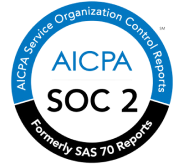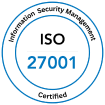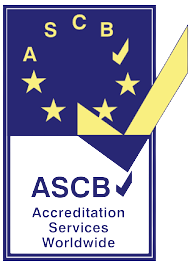As we all enter the era of digital HR maturity, there is a sharp rise of top skills in demand. However, with the volatile changing talent market and pool, it is often difficult to gauge the right skills in need.
With the in-house uKnowva HRMS solutions backed with AI technologies, HRs effectively predict the skills in demand. For that, these talent hunters must evaluate the strategic approaches before applying the same.
The blog post has a purpose: teaching the right approaches to predict the skill shortage and demand on time.

Approaches To Predict Top Skills In Demand Effectively:
Connect with other department heads.
An important approach to predicting in-demand skills in your organisation is to utilise your professional connections within the company. For that, HR and talent heads must use the employee engagement tools by uKnowva.
The conversations there are transparent, purposeful, and have different streams to finish the task. Talent hunters no longer wait for days to predict the skill shortage. They can get the raw data from different functional heads of their organisation using this tool.
Later, these recruiters can run the data sets at the system's backend. uKnowva HRMS has Google Analytics and advanced HR analytics to utilise.
This will help HR and team leaders predict the top skills in demand without bias or neglect. The system allows them to import various data sets in different formats like CSV.
Connecting with other department heads is important for recruiters. They can configure or customise their job postings according to that. This process also helps meet the firm's skill and knowledge gaps.
Plus, integrating job portals over the HRMS networks helps recruiters fasten the process.
Use HR analytics to read the employee project and endorsed skills data.
Another smart strategy to predict the most in-demand skills is using the HR analytics tool. The uKnowva smart solution platform already has it for young and future fit recruiters to leverage.
The HR analytics reads the employee data of the organisation. Research analysts can develop reports. These reflect the skills acquired and implemented by employees in a given period.
From there, HR leaders have the right estimation of the skill-based queries like:
- The number of employees having a particular skill set for a project.
- The number of employees acquiring new skills in a given time frame.
- The number of employees who haven’t learnt new skills off-lately.
- Numbers and categories of new skills that are learned and implemented by the staff.
- The number of tough projects in the system (pending, completed, or acquired).
- The least and most acquired skills by the organisation’s employee base.
- The most suggested skills by the workforce, team leaders, project heads, and talent hunters.
The above-bulleted list is just an example. Multiple queries might be resolved and highlighted based on the real-time active employee data. For that, researchers and recruiters must connect and collaborate.
This will help the firm to hire right in the next recruiting or hiring cycle. Running these analytics educates the team leaders and changemakers in the company. That is for knowing how well-equipped are their teams, business unit, or the organisation as a whole.
These reports help evaluate the workforce competency and capability levels to acquire, process, and complete projects.
Run internal surveys for employees’ opinions on top skills in demand.
Another strategic method is to collect data from internal sources to feed it to HR Analytics. That is by putting up a survey collectively for the entire business unit, different teams, or the organisation.
Managers can continuously run this survey every 3-6 months to upgrade the knowledge on skills in demand. Employees will vote for their ideas and suggestions. The integrated HR system can automatically make a report based on those votes.
This will ease the task for employers and talent hunters to estimate the new skills to impart and onboard. It will refine the culture and help develop + nurture the workforce to the next level.
Recruiters don’t need to depend on the response from the functional heads using this method. They can allow employees to vote anonymously as well by giving them the option to hide their names.
Otherwise, usually only the system admins and survey moderators have access to see the results.
That includes sensitive information. However, coming back to the point, it’s a straightforward method to collect data and accurately predict the top skills in demand.
Recruiters match these results from the other reports highlighted in the uKnowva HR analytics. They can evaluate and compare two reports answering similar queries on skills to impart.
They will know which type of people to hire next without unnecessarily increasing the company's cost. Also, such a strategy will help connect the talent hunter with everyone in the organisation or team.
This type of survey has a positive impact on the employees. They feel that their vote counts and can bring change to the existing learning and development module.
Leverage the insights from job postings.
This one is a smart and less time-consuming approach to study, estimate, and predict most in-demand skills.
Recruiters can integrate their job portals into the uKnowva HRMS. The backend algorithms and modules study the application tracking system in its recruitment engine.
It enables talent hunters to study the real-time data that can be related to:
- Total number of applicants having a certain degree or skills.
- Total number of applicants applying for which type of jobs the recruiter posted.
- Total number of candidates getting hired from the company.
- Total number of applicants having skills that the company wants in the existing talent pool.
- Total number of skills that are missing from the talent pool but the company wants as per the internally collected data.
There is no dearth or shortage of insights for talent hunters to capture and utilise from these portals. With the implementation of the uKnowva recruitment engine, recruiters post jobs automatically.
But that’s not all. The algorithms at the backend generate automated reports. This helps CHROs too to refine their talent nurturing process. Because of these inputs, their teams realise the talent gaps and fill them on time.
Conclusion:
Predicting top skills in demand comes easy to talent hunters and nurturers in the firm. That is when they use advanced HR analytical tools like the uKnowva HRMS platform.
You can start this journey by mapping the skills and behaviours to expect from your next hire.
Additionally, get automated recommendations to redefine employee succession planning to acquire tougher and value-adding projects. All that is possible by integrating uKnowva HRMS into your core business and HR operations.












